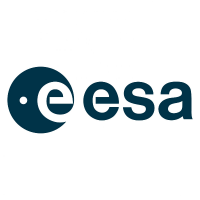Intern in the ESA's Advanced Concepts Team
European Space Agency - ESA
Job Requisition ID: 19067
Application Deadline: 30 November 2024 23:59 CET/CEST
Establishment: ESTEC, Noordwijk, Netherlands
Directorate: Directorate of Technology, Engineering and Quality
Publication: External Only
Type of Contract: Intern
Date Posted: 1 November 2024
Internship Opportunity in the Directorate of Technology, Engineering and Quality.
Location
Noordwijk
Our team and mission
This position is based at the European Space Research and Technology Centre (ESTEC) - Noordwijk, Netherlands
The Advanced Concepts and Studies Office is responsible for:
- ensuring the overall coordination, coherence and performance of programme and corporate studies in support to the preparation of the Agency's future activities, in line with its long-term strategic objectives and priorities;
- managing the Discovery and Preparation element of the Basic Activities in support of all the Agency's programmes and in particular of the Director General and the Strategy Department (DG-S); support the selection of activities;
- managing the Advanced Concepts Team (ACT) in charge of beyond the horizon multidisciplinary research for space, exploring new approaches to space related R&D (including competition, prizes, games), research for disruptive innovation, developing an expert network at academic level, and providing a capability for fast first look analysis of problems, challenges and opportunities.
This internship will take place within ESA's Advanced Concepts Team (ACT). The ACT is a team of scientists who originate from a broad variety of academic fields and are aiming for an academic career. Its task is to monitor, perform and foster research on advanced space systems, innovative concepts and working methods. It interacts externally almost exclusively with academia and operates as a truly interdisciplinary team bound to high scientific standards. Through its research, the team acts as a pathfinder to explore novel, potentially promising areas for ESA and the space sector, ranging from applied to fundamental research topics. An important task of the team is to communicate scientific trends and results, as input to the strategic planning of the Agency.
Candidates interested are encouraged to visit the ESA website: http://www.esa.int
Field(s) of activity for the internship
You can choose between the following topics:
1) Topic 1: Bird-Inspired Stabilisation Systems
Vision, or some level of photoreactivity, is a great example of co-evolution, and it is a fundamental sense for most animals. Thus, keeping the organ responsible for vision stable is the key to ensuring the correct acquisition of visual stimuli. The most common natural reflexes for such a purpose are the optokinetic response, the saccades, and the vestibuloocular reflex acting on the eye, and the vestibucollic reflex acting on the neck. A robotic implementation of human reflexes has already shown improved camera stabilization when compared with traditional control methods [1]. However, human are far from the best example of eye stabilization in the animal kingdom: birds, and in particular pigeons, showcase a much higher ability to stabilize their head with respect to the perturbation of the body [2-3]. This can be attributed to the presence in birds of two vestibular organs instead of one [4]. We aim to implement a bird-inspired neural circuit for the stabilization of cameras, both to improve state-of-the-art stabilization systems and to try to better understand how exactly birds make use of information from both vestibular organs to achieve the performance that we observe in nature.
Objectives:
You shall implement a bird-inspired neural circuit comprehensive of two vestibular organs to achieve camera stabilization. The goal of this internship can be divided of step on increasing difficulty:
- Considering the body-to-eye as a singular 6 DoF joint, and developing a controller able to stabilize the eye when the body's position is perturbed;
- Application of the controller during space applications such as landing, take-off, rendezvous, and docking;
- Implementation of separate circuits for the vestibuloocular and the vestibucollic reflex, considering the body-to-eye as a chain of two 6 DoF joints;
- Development of an anatomically accurate simulation to try to understand and investigate how the mechanism could really work in birds.
- Connect ACT tools such as cascade [1], heyoka, dsgp4 into one pipeline able to generate and log collision/conjunctions events;
- Define the operational details of the collision simulations;
- Create the dataset by running batch simulations having in mind (and defined) a possibile competition setup [2].
- Add solar radiation pressure to a dynamical system and simulate the resulting thrust available for a solar sail;
- Use reinforcement learning to train a neural-Lyapunov function for low-thrust minimum-time transfers;
- Compare training with and without constraints for interplanetary transfer scenarios.
- Review the state-of-the-art in quantum sensing technologies and their current applications in space and identify promising quantum sensing protocols;
- Assess the technical feasibility and theoretical bounds of sensitivity of the studied/proposed quantum sensing protocol in a space context;
- Develop and/or improve models for the simulation of networks of quantum sensors in space for the identified protocols;
- Employ the developed simulation method to study the properties and characteristics of the quantum sensing network.
References:
[1] Falotico, E., Cauli, N., Kryczka, P., Hashimoto, K., Berthoz, A., Takanishi, A., Dario, P. and Laschi, C., 2017. Head stabilization in a humanoid robot: models and implementations. Autonomous Robots, 41, pp.349-365.
[2] Goode, Christopher T., et al. "Visual influences on the development and recovery of the vestibuloocular reflex in the chicken." Journal of Neurophysiology 85.3 (2001): 1119-1128.
[3] McArthur, K.L. and Dickman, J.D., 2008. Canal and otolith contributions to compensatory tilt responses in pigeons. Journal of neurophysiology, 100(3), pp.1488-1497.
[4] Necker, R., 2006. Specializations in the lumbosacral vertebral canal and spinal cord of birds: evidence of a function as a sense organ which is involved in the control of walking. Journal of Comparative Physiology A, 192, pp.439-448.
2) Topic 2: Dataset generation for collision avoidance decision making
Space is becoming increasingly congested, the need for robust satellite collision avoidance systems is more critical than ever. With thousands of satellites operating in Low Earth Orbit (LEO), the risk of collisions is not just a theoretical concern but a pressing reality. This internship, titled "A Gym for Satellite Collision Avoidance Decision Making," seeks to address this challenge by developing a comprehensive dataset that simulates satellite conjunctions and potential collisions. This dataset will serve as a foundation for testing and refining decision-making algorithms for satellite collision avoidance maneuvers. The ability to systematically study and compare different approaches for automatic collision detection and avoidance will be invaluable in advancing the field. Moreover, the gym will allow exploration into the use of causal inference methods, which have shown great promise in managing uncertain environments with numerous variables—a common scenario in space operations.
Objectives:
The objective of this internship will be:
Resources:
[1] cascade: https://esa.github.io/cascade/index.html
[2] kelvins: https://kelvins.esa.int
3) Topic 3: Solar sailing with Reinforcement Learning
Solar sails are propellant-free propulsion systems that utilise the momentum exchange between photons and large reflective surfaces to generate thrust. This creates a minimum-time constrained trajectory design problem, which can be solved using control Lyapunov functions [1]. By applying reinforcement learning, we can optimise such a control Lyapunov function. We are keen to explore the possible parameterisations of this system and determine whether the constraints imposed by the solar sail are best included a-priori or can be learnt during training. Ideally, the objective would be to train a controller that can adapt to a range of possible sail sizes.
Objectives:
You will be provided with a gym environment for simulating low-thrust transfers and training reinforcement learning agents. Your task will be to simulate a solar sail within this environment, incorporating both the solar radiation pressure and the attitude constraints imposed on the sail. You will then investigate different control parameterisations, including control Lyapunov functions and neural-Lyapunov functions. An interplanetary transfer scenario will be used to compare training with and without constraints for low-thrust minimum-time transfers.
References:
[1] Niccolai, Lorenzo, Alessandro A. Quarta, and Giovanni Mengali. “Solar Sail Heliocentric Transfers with a Q-Law.” Acta Astronautica 188 (November 2021): 352–61. https://doi.org/10.1016/j.actaastro.2021.07.037.
4) Topic 4: Distributed Quantum Sensing in Space
Space missions require high-precision measurement systems to detect minute changes in gravitational fields, magnetic fields, as well as for the observation of novel physical phenomena. Distributed quantum sensing networks, consisting of (spatially separated) quantum sensors, leverage the principles of quantum mechanics which allow for the enhancement of measurement precision beyond the standard quantum limit (i.e. the limiting sensitivity which can be obtained with classical measurement apparatuses) [1]. A sensitivity enhancement beyond the standard quantum limit is particularly valuable where extreme precision is required over large distances or areas and is hence of great interest for space-based applications. Some key applications include gravitational wave detection, the synchronisation of atomic clocks over long distances (critical for e.g. GPS and telecommunication), monitoring subtle variations in space-time, detecting novel physical phenomena through higher precision measurements [1-4]. The proposed internship will contribute to ongoing research and development in this field by exploring the potential of distributed quantum sensing in a space context, focusing on the design, simulation, and potential implementation of quantum sensing networks of satellites.
Objectives:
By the end of the internship, you will have gained a deep understanding of quantum sensing technologies and their application in space. The project is expected to yield a preliminary design for a distributed quantum sensing network and a simulation-based analysis of its performance in a space context. The goals of the internship are summarized by the following points:
References:
[1] Zheshen Zhang and Quntao Zhuang, Distributed Quantum Sensing, Quantum Sci. Technol. 6, 043001 (2021).
[2] Kómár, P., Kessler, E., Bishof, M. et al. A quantum network of clocks, Nat. Phys 10, 582–587 (2014).
[3] D. Gottesman, T. Jennewein, and S. Croke, Longer-Baseline Telescopes Using Quantum Repeaters, Phys. Rev. Lett. 109, 070503 (2012).
[4] J. Borregaard and I. Pikovski, Testing quantum theory on curved space-time with quantum networks, arXiv:2406.19533 (2024).
Behavioural competencies
Result Orientation
Operational Efficiency
Fostering Cooperation
Relationship Management
Continuous Improvement
Forward Thinking
For more information, please refer to ESA Core Behavioural Competencies guidebook
Education
You must be a university student, preferably in your final or second-to-last year of a university course at Master’s level and you need to remain enrolled at your University for the entire duration of the internship.
Additional requirements
The working languages of the Agency are English and French. A good knowledge of one of these is required. Knowledge of another Member State language would be an asset.
Knowledge and background in relevant analytical and computational methods is an asset.
Other information
ESA is an equal opportunity employer, committed to achieving diversity within the workforce and creating an inclusive working environment. We therefore welcome applications from all qualified candidates irrespective of gender, sexual orientation, ethnicity, beliefs, age, disability or other characteristics. Applications from women are encouraged.
At the Agency we value diversity, and we welcome people with disabilities. Whenever possible, we seek to accommodate individuals with disabilities by providing the necessary support at the workplace. The Human Resources Department can also provide assistance during the recruitment process. If you would like to discuss this further, please contact us via email at [email protected].
Please note that applications are only considered from nationals of one of the following States: Austria, Belgium, the Czech Republic, Denmark, Estonia, Finland, France, Germany, Greece, Hungary, Ireland, Italy, Luxembourg, the Netherlands, Norway, Poland, Portugal, Romania, Spain, Sweden, Switzerland, and the United Kingdom. Nationals from Latvia, Lithuania, Slovakia and Slovenia, as Associate Member States, or Canada as a Cooperating State, can apply as well as those from Bulgaria, Croatia and Cyprus as European Cooperating States (ECS).
Apply now »
Opslaget er indhentet automatisk fra virksomhedens jobsider og vises derfor kun som uddrag. Log ind for at se det fulde opslag eller gå videre til opslaget her:




